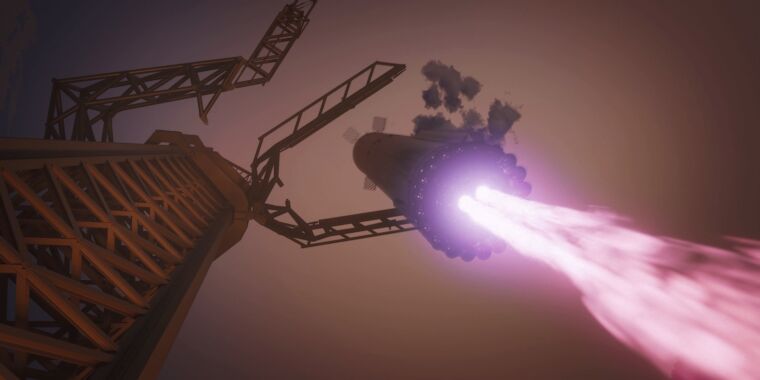The Federal Aviation Administration has signaled to SpaceX that it won’t approve a launch license for the next test flight of the Starship rocket until at least late November, the company said in a statement on Tuesday.
This is more than two months later than the mid-September timeframe the FAA previously targeted for determining whether to approve a launch license for the next Starship flight. SpaceX says the Super Heavy booster and Starship upper stage for the next launch—the fifth full-scale test flight of the Starship program—have been ready to launch since the first week of August.
“The flight test will include our most ambitious objective yet: attempt to return the Super Heavy booster to the launch site and catch it in mid-air,” SpaceX said in a statement.
“Environmental regulations and mitigations serve a noble purpose, stemming from common-sense safeguards to enable progress while preventing undue impact to the environment,” SpaceX said. “However, with the licensing process being drawn out for Flight 5, we find ourselves delayed for unreasonable and exasperating reasons.”
Hurry up and wait
In the last few weeks, technicians at the Starship launch site in South Texas have continued upgrading the structure of the launch pad to enable the catch. The Super Heavy booster, as long as and wider than a Boeing 747 jumbo jet, will descend vertically on the power of its Raptor engines and slow to a near-hover, allowing two mechanical catch arms to close and capture the stainless steel booster over the launch mount.
This will be the first time SpaceX has tried a mid-air catch of a rocket. Like the first stage of the Falcon 9 rocket, the Super Heavy booster is designed for reusability. But SpaceX aims to recover the booster directly back at the launch pad, rather than on an offshore landing platform hundreds of miles away.
“It’s understandable that such a unique operation would require additional time to analyze from a licensing perspective,” SpaceX said. “Unfortunately, instead of focusing resources on critical safety analysis and collaborating on rational safeguards to protect both the public and the environment, the licensing process has been repeatedly derailed by issues ranging from the frivolous to the patently absurd.”
SpaceX said the delays in regulatory approvals for the next Starship test flight have been driven by “false and misleading reporting, built on bad-faith hysterics from online detractors or special interest groups who have presented poorly constructed science as fact.”
SpaceX has decried regulatory hurdles before. Last year, company officials called for the FAA to double its licensing staff for reviewing applications for commercial launch and reentry applications. Congress approved an increase in funding for the FAA’s Office of Commercial Space Transportation to $42 million for fiscal year 2024. In the last year, the FAA’s space office has added approximately 35 workers, bringing the total staffing level to 158 employees, said Kelvin Coleman, the FAA’s associate administrator for space transportation, in a hearing Tuesday before the House Space and Aeronautics subcommittee.
“In the president’s budget request for ’25, we are looking for additional staffing that we will need to continue to keep pace with the demand for our products and services that we’re seeing,” Coleman said.
Tuesday’s update from SpaceX was the most aggressive statement the company has released about the FAA’s slow processing of launch license applications, and it touched on a deeper complaint than the FAA’s lack of resources for oversight of commercial space activities. The company suggested the hold-up for launching Starship’s next test flight isn’t SpaceX’s technical readiness or even that an understaffed FAA is overwhelmed with regulating a fast-growing commercial launch industry.
Instead, SpaceX wrote in a statement to the House subcommittee on space and aeronautics that licensing delays are caused by bureaucratic sluggishness, a lack of transparency, poor methodologies, and regulatory inefficiency and duplication. As an example, SpaceX cited roadblocks with its ongoing application for a launch license for the fifth Starship test flight.
“This delay was not based on a new safety concern, but instead driven by superfluous environmental analysis,” SpaceX said. “The four open environmental issues are illustrative of the difficulties launch companies face in the current regulatory environment for launch and reentry licensing.”

